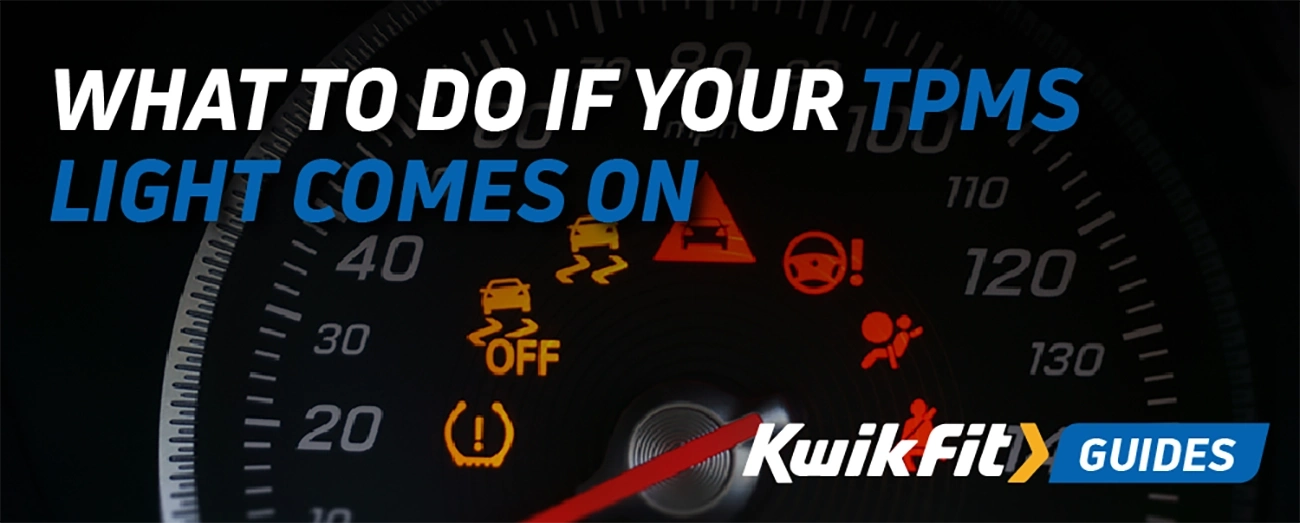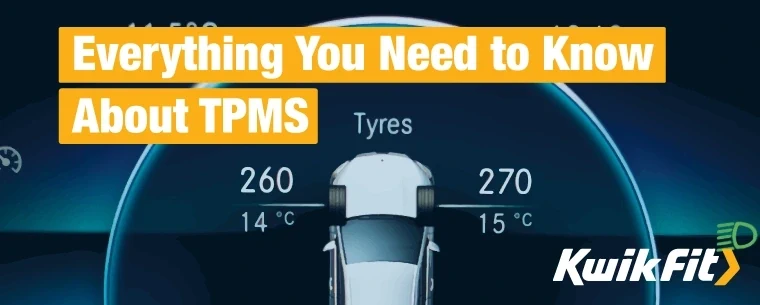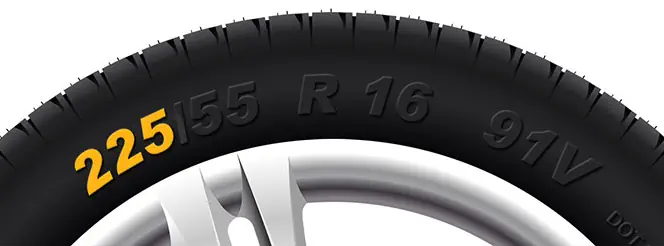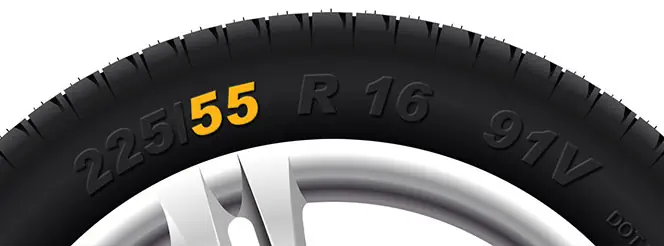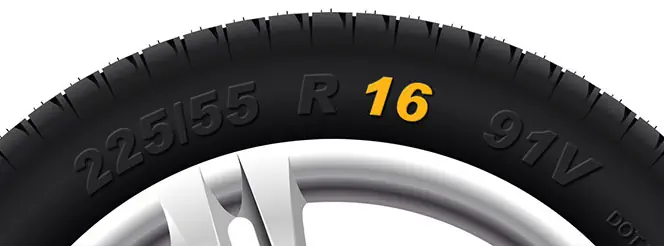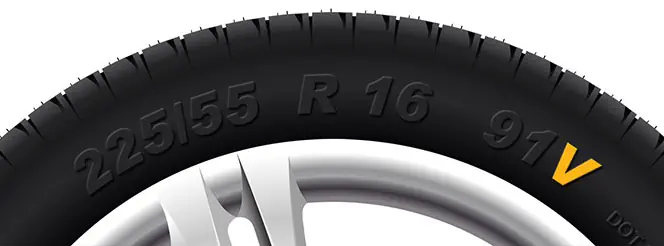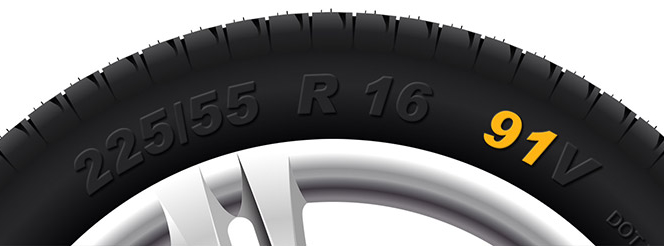Tyre Pressure Monitoring Systems
An increasing number of vehicle makes and models are fitted with tyre pressure monitoring systems (or TPMS for short) and all new vehicles manufactured since 2014 have TPMS integrated as standard.
What is a TPMS?
A TPMS is a vehicle safety feature which monitors the air in a vehicle’s tyre and alerts the driver if pressure levels become too low.
- A sensor valve in each tyre monitors the tyre pressure, and reports low pressures or tyre pressure imbalances to the driver via the dashboard display.
- TPMS sensors in the vehicle show a warning light when there is a drop in pressure of between 6-7PSI. This is now a legal requirement, although some manufacturers set their warning lights to come on when sensors detect much smaller decreases for additional peace of mind.
Why do TPMS sensors need to be serviced?
TPMS sensors should be serviced regularly to avoid sensors developing faults. One of the most common TPMS sensor issues we see at our centres is battery failure. The more miles you travel, the quicker the battery will deplete.
TPMS sensor stems can also become corroded over time, just like standard tyre valves, as they are open to the elements - and take on everything the road throws at them.
The benefits of TPMS Valve Service
TPMS valve servicing refers to the maintenance of the valves in your car’s Tyre Pressure Monitoring System. Since these valves can wear out or take on damage over time, servicing them regularly ensures that the system is working as it should.
- Improves tyre safety. Reduces the likelihood of unexpected blow outs and uneven tyre wear.
- Increases fuel efficiency by maintaining the optimal tyre pressure for reduced rolling resistance
- Avoids costly tyre repairs such as rim, suspension, and tyre damage.
- Extends tyre lifespan, saving you money in the long run.
- Ensures legal compliance for MOT checks.
Tyre Pressure Monitoring Systems explained
Wondering how Tyre Pressure Monitoring Systems work? Watch the video below to find out more about how TPMS monitors your tyres, TPMS warnings, and the maintenance required to keep them in good condition.
TPMS & MOTs
A faulty TPMS sensor can now result in an immediate MOT failure. As of 1st January 2015 any car manufactured from 2012 onwards that is displaying a TPMS warning light on the dashboard due to a system malfunction will automatically fail its MOT test.
Tyre pressure sensor replacement
Batteries in TPMS sensors typically last between 5-10 years. When the battery dies, the entire sensor will need to be replaced. Sometimes, the sensors themselves can corrode if exposed to road salt, water, and debris over time (this is known as galvanic corrosion). If sensors become faulty, they may give incorrect warnings.
TPMS services at Kwik Fit
Should you require a new TPMS sensor, at Kwik Fit we can supply a cost-effective replacement sensor which clones your existing settings for a fraction of the price of a dealership replacement. We can also service your existing TPMS sensors to ensure they continue to work correctly.
If your vehicle doesn’t have a TPMS, don’t worry - you can use our Tyre Pressure Search tool to find out your vehicle’s optimum tyre pressure.
Tyre Pressure Monitoring System FAQs
Do you have a specific question about TPMS or tyre pressure sensor replacement? Find your query below for an expert answer, or contact the team at your local Kwik Fit to speak to our team directly.
Are Tyre Pressure Monitoring Systems worth it?
TPMS systems are a great addition to a car, especially since they provide drivers with real-time monitoring of their tyre pressures. Safety-wise, TPMS systems are essential for reducing tyre blowouts. This, alongside the cost savings, mean that TPMS systems are definitely worth it.
Is TPMS a legal requirement?
Yes, TPMS has been a legal requirement for all passenger cars since November the 1st 2014. What’s more, a faulty TPMS warning light can result in an automatic MOT failure (as of the 1st of January 2015). Find out what other things can fail your MOT.
Is it okay to drive with the TPMS light on?
No, if your Tyre Pressure Monitoring System light is on, there is something wrong with your tyre pressure sensor or your tyres need to be inflated. If you continue to drive after you notice your TPMS light come on, you may encounter difficult vehicle handling and, if left for an extended period, you may also damage your tyres. It’s essential to check your tyres straight away and get to a suitable place to pump them up as soon as you can.
What are the disadvantages of TPMS?
While Tyre Pressure Monitoring Systems have multiple benefits, such as reducing risk and saving money on fuel, they present challenges in the form of battery failure and valve stem corrosion. Awkwardly, if a sensor battery fails, the entire sensor will need to be replaced — not just the battery.
Does TPMS tell you which tyre is low?
In many modern cars, the TPMS system will tell you which tyre is flat or under-inflated. However, some systems only provide drivers with a more general warning, requiring them to investigate further. You can check your vehicle handbook to see which kind of alert your TPMS will give you.
Is is OK to drive without TPMS?
It is not advisable to drive without a fully-functioning TPMS. Aside from being a legal requirement for new vehicles since November 2014 — and causing instant MOT failure if not working — TPMS is also extremely helpful.
Does TPMS save fuel?
Yes, Tyre Pressure Monitoring Systems can help drivers save fuel. This is because tyres that are correctly inflated have less rolling resistance and therefore require less fuel to be moved. Under-inflated tyres have greater contact with the road and therefore, due to friction, require more energy to be moved (and, as such, use more fuel).
How long do TPMS sensors last?
The sensors in TPMS typically last between 5 to 10 years (or around 100,000 miles). Generally speaking, the more miles your vehicle covers, the quicker the battery in the TPMS sensor depletes — and the sooner it will need replacing. Speak to your local Kwik Fit about tyre pressure sensor replacement today.
Is TPMS expensive to fix?
The cost of tyre pressure sensor replacement varies from vehicle to vehicle. However, Kwik Fit’s tyre pressure sensor replacement services help offer a cost-effective solution by cloning existing settings to keep costs much lower than dealership prices.
How can you tell if TPMS is bad?
If you have a TPMS fitted and your tyres need attention, your TPMS warning light will illuminate. If the light stays on even after you’ve adjusted your tyre pressures, or if the light gives inconsistent readings or false alerts, there may be something wrong with your battery - and you may need a tyre pressure sensor replacement.


